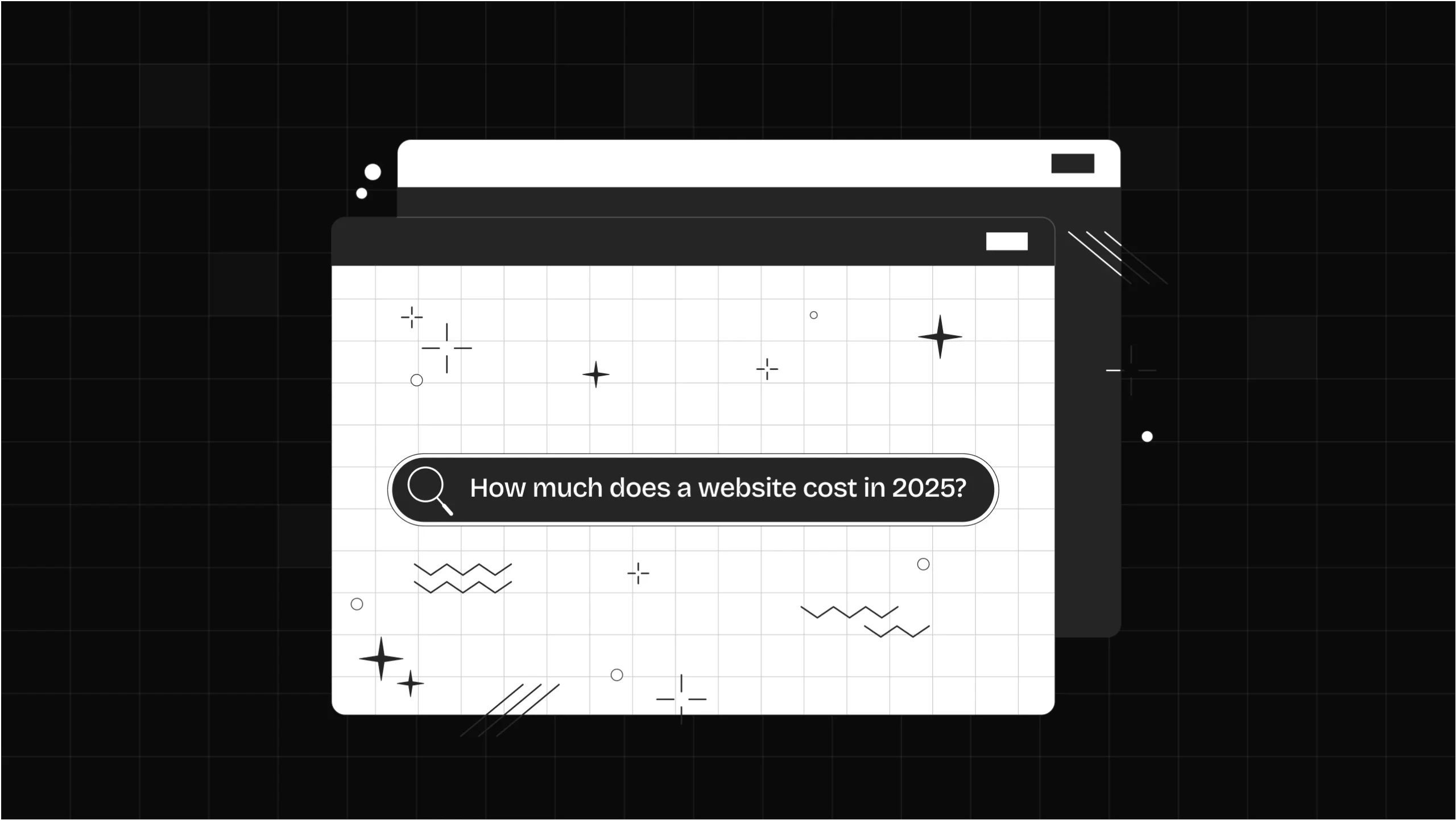
In this article, we explore how much does a website cost in 2025. By the end, you’ll have a clearer understanding of what to expect when building a website using the latest technologies and design trends.
Creating a website is a critical step for any business, yet getting an exact price can often feel challenging. Why? Because no two websites are the same. Each project is tailored to specific goals, needs, and functionalities. Simply put: the cost depends on what you want and need.
Here, we’ll outline the typical cost ranges and considerations for building a website from scratch with a professional digital agency. You’ll also find answers to common questions, such as:
While we’d love to provide a universal price tag for every website, the truth is that costs vary significantly depending on the size of the project, the desired features, and the complexity of implementation. To help guide you, we’ll break down the typical costs into three main categories:
The first step in creating a website is registering a domain. Domains vary in cost depending on their extension and purpose:
Targeting Local Markets: If your website targets a local market (e.g., United Kingdom,), a domain with a local extension like .co.uk is a great choice.
Targeting International Audiences: For global businesses, a .COM domain remains the most popular and versatile option.
Branded Extensions: For businesses looking to stand out, new top-level domains (TLDs) like .AGENCY, .MEDIA, .DESIGN, or .WEBSITE offer unique branding opportunities. These tend to be priced higher.
Domains are typically paid for annually, with costs starting from a modest price point depending on the provider and type of domain.
Every website needs hosting to be accessible online. Hosting costs depend on your website’s size, traffic, and specific requirements. Here are the main options:
Shared Hosting: Ideal for smaller websites with limited traffic. It’s an affordable option where multiple websites share server resources.
VPS Hosting: Offers dedicated resources on a virtual server, suitable for growing websites with higher traffic and performance demands.
Dedicated Hosting: Perfect for large-scale websites requiring high-performance servers. It ensures exclusive use of a server’s resources.
Hosting plans typically start at a low monthly rate and increase based on your resource needs, such as storage, bandwidth, and additional features like SSL certificates or dedicated IP addresses.
A presentation website serves as the digital face of your business. It includes essential pages such as About Us, Services, Products, Blog, and Contact. Pricing varies based on the complexity of the design and the features required. Presentation websites can be built using platforms such as:
WordPress – A highly customizable and popular open-source platform.
Webflow – A modern tool for visually stunning, code-free websites.
Framer – Perfect for cutting-edge designs and rapid prototyping.
For a fully custom presentation website, the design and development process starts with strategy workshops and wireframing, followed by unique UI/UX design and advanced implementation.
E-commerce websites enable businesses to sell products online and require additional features like shopping carts, payment gateways, and inventory management. These websites can be built using platforms such as:
WooCommerce – Great for small to medium online stores.
Shopify – A popular platform offering user-friendly, hosted e-commerce solutions.
Webflow Ecommerce – Ideal for visually appealing, modern online stores.
Magento / OpenCart – Suitable for larger stores with more advanced needs.
The cost of an e-commerce website depends on the number of products, customizations, and integrations required. Starting prices reflect basic setups and scale with the complexity of features.
If you already have a website but need a fresh look or better functionality, redesigning is an excellent option. The cost of a redesign varies depending on the scope of work, such as improving the user experience, adding new features, or optimizing for performance and SEO. Platforms like WordPress, Webflow, or Framer can be leveraged to modernize your existing website while maintaining your brand identity.
Beyond the initial development, maintaining a website is essential to ensure it stays secure, fast, and up-to-date. Typical maintenance tasks include:
Maintenance plans can be tailored to your needs, with costs starting from basic upkeep to more comprehensive service packages.
Now that you have an overview of the costs and considerations for creating a website in 2025, you’re better equipped to choose the right path for your business. Whether it’s a presentation website, an e-commerce platform, or a redesign project, dhero.studio can help you achieve your goals with tailored strategies and cutting-edge solutions.
Contact us today for a personalized quote and let’s bring your vision to life!